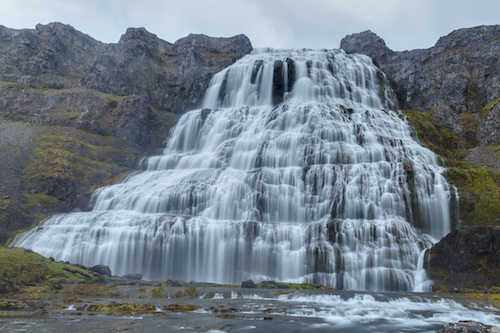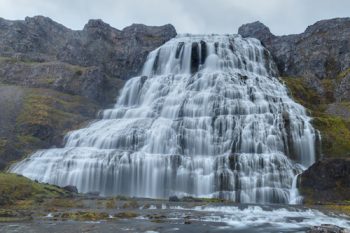Good, Better, Best: Comparing Things In Icelandic (Stigbreyting) Posted by Meg on Dec 27, 2017 in Icelandic grammar, Uncategorized
Let’s kiss the trials and tribulations of 2017 goodbye by returning to grammar – specifically, adjectives, which are called lýsingarorð. The Icelandic term is somewhat more apparent than the English one; it contains the word for to describe, or perhaps even illuminate, within it (að lýsa), so it’s easy to remember. Today, specifically, I want to talk about the construction of comparatives (miðstig) and superlatives (efstastig).
In English, to create a comparative and a superlative, we generally add –er and -est to the end of a word, or the free-standing words “more” and “most”. That box is heavier than this one. It compares two or more things together (tvennt er borið saman). In Icelandic, you most commonly transform an adjective into a comparative using the ending –ar-i/-ast-ur. The second most common form is –r-i/-st-ur. Icelandic also has a mechanism called doubling (tvöfoldun), which occurs when the ultimate consonant in a given word is doubled, to construct comparatives. The final group end in –r-i/-ast-ur.
Comparatives decline like weak adjectives; taking an –i ending for all masculine and feminine singular, and -a in the neuter. Plurals all end in –i. This rule also applies to other comparative and superlative endings. Superlatives will generally not take the strong –ur ending, however, for one simple reason: having a superlative implies the word “the” – so the noun will almost always have the definite article, meaning that the adjective is weak.
Superlatives are constructed with the endings –ast-ur (i) and –st-ur (i)
*
a-ri, -ast-ur
Most adjectives that end in –ur will have an –ar-i ending as their comparative form – which is to say, most adjectives. They decline like this:
- ljótur, ljót-ar-i, ljót-ast-ur (ljót-ast-i)
- kaldur, kald-ar-i, kald-ast-ur (kald-ast-i)
This is by far the largest category, and it is still productive (i.e., if a new word is created, it’ll take the –ar-i/-ast-ur ending and not the –r-i/-st-ur ending); it includes other words, like two-syllable adjectives with –n- as the ending (fyndinn, feginn = fyndnari, fegnari). It also includes single-syllable words, and two-syllable words without an ending (vit-ur = vitrari). Other words (thanks to a handy list from a professor):
heitur, breiður, röskur, flatur, svalur, harður, bjartur
einfaldur, margfaldur, skynsamur
fús, vís, dýr, sár, varkár, skær, hvass, jafn, kyrr
dapur, bitur
Try putting all of those words into miðstig and efstastig as an exercize, then check your results on BIN.
*ATTENTION: The exceptions to this group are adjectives ending in -legur,-ugur, -aður.
Those will take the ending –r-i, -ast-ur.
*
r-i, -ast-ur
These include ALL -LEG-UR WORDS.
skemmtilegur, skemmtileg-r-i, skemmtileg-ast-ur, skemmtileg-ust- ø
skítugur, skítug-r-i, skítug-ast-ur/skítug-ust- ø
gáfaður, gáfað-r-i, gáfað-ast-ur/gáfuð-ust- ø
Other words in this small category (r-i/-ast-ur) include:
Fallegur, venjulegur, laglegur
auðugur
máttugur, grösugur, kunnugur, slóttugur
háll, svikull, heill, sæll, þéttbýll, þögull,
gjöfull, ötull
fínn, hreinn, táknrænn, penn
menntaður, þjálfaður, magnaður
nýr, hlýr, frjór, auðsær, grár, trúr
You’ll notice a few odd-looking ones in this group (gjöfull, ötull, háll, grár, nýr, fínn, hreinn). That doubling I mentioned at the beginning also takes place for this category of word; in essence, adjectives ending in –r- will double to create the comparative form (e.g., nýr becomes nýrri, nýjastur. Blár becomes blárri, bláastur). This rule does not apply to the words fár, hár, smár because they have a stem change (smár becomes smærri and smæstur – see next category).
Adjectives ending in –n or –l (hreinn, ötull) will also double.
hreinni, hrein-ast-ur
hálli, hál-ast-ur
If you’re interested, this is more broadly called “assimilation”. Essentially, there was an r (hrein-r-i) but it was assimilated into the n, becoming an –n itself (Yes, I do think about it as “n ate r”). The same goes for the double L.
*
The next category are –r-i/-st-ur words.
These can generally be identified by a vowel-change in the stem. You can think of these vowel changes as synonymous to those that take place in many verbs (e.g., fara-fer, or gróa-græ).
grannur, grenn-r-i, grenn-st-ur
ungur, yng-r-i, yng-st-ur
And, others:
a-e
langur-lengri-lengstur
grannur, skammur, svangur
ó–æ
stór-stærri-stærstur
á-æ
hár-hærri-hæstur
lágur-lægri-lægstur
smár
u-y
ungur-yngri-yngstur
þungur, stuttur, fullur
ú-ý
rúmur-rýmri-rýmstur
mjúkur, djúpur
ö-e
þröngur-þrengri-þrengstur,
dökkur, glöggur
This is a lot of information, and I’ve still got to add irregulars to it! Next time.
But the most important thing to remember is this:
It seems complex – and it is – but you have, if nothing else, one thing in your toolbox: reading. And when you get tired of reading, listening. You’ll eventually start to learn the ins and outs, but it takes sustained effort and as much immersion as you can get, wherever you are.

Build vocabulary, practice pronunciation, and more with Transparent Language Online. Available anytime, anywhere, on any device.





![[CC BY-SA 4.0 (https://creativecommons.org/licenses/by-sa/4.0)], via Wikimedia Commons](https://blogs.transparent.com/icelandic/wp-content/uploads/sites/29/2017/12/Cascada_Dynjandi_Vestfirðir_Islandia_2014-08-14_DD_154-156_HDR-150x150.jpg)

Comments:
helen Col:
Thank you Meg. I have taken notes and will now practise changing “lýsingarorð” to “miðstig” and “efstastig” with the help of BIN.
Just a suggestion, it would be nice to have a few common phrases using adjectives, comparatives and superlatives to hand. Maybe some exclamations too like ‘That’s the most beautiful car I’ve ever seen!’ , ‘What a beautiful handbag!’ We could then try to use them to make more of our own.
Thank you again for your work.
Meg:
@helen Col Of course! I’ll include some in the next post!